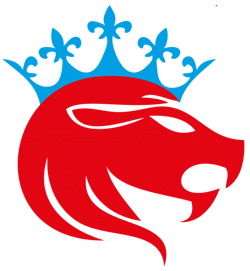Prior to the final signing of the agreement on 27 June 2014, Russian government officials said that Russia could most likely increase tariffs on Ukrainian imports, with Russia being Ukraine`s largest export market, which accounts for nearly a quarter of Ukraine`s international trade. [200] However, as a result of Russian aggression against Ukraine, the EU has become Ukraine`s largest trading partner. It is also its main source of foreign direct investment (FDI). [201] The Deep and Comprehensive Free Trade Area (ACFTA) is the economic part of the agreement. It provides a framework for the modernization of the Ukrainian economy and trade relations. It defines a new format of relations between Ukraine and the EU on the basis of „political association and economic integration“ and serves as a strategic guideline for systematic socio-economic reforms in Ukraine. The political provisions of the treaty were signed on 21 March 2014, after a series of events that blocked their ratification led to a revolution in Ukraine and the fall of Viktor Yanukovych, then President-in-Office of Ukraine. [11] This fall was caused by Yanukovych`s last-minute refusal to sign the agreement. Instead, Russia, Ukraine`s second-largest trading partner, presented a link to the existing customs union of Russia, Belarus and Kazakhstan as an alternative. [13] [14] After March 21, 2014, trade integration issues were temporarily suspended (pending the outcome of the Ukrainian presidential elections on 25 May 2014) until the European Union and new Ukrainian President Petro Poroshenko on 27 June 2014 signed the economic component of the Association Agreement between Ukraine and the European Union[2], which is the „first step“ Ukraine`s move towards EU membership. [15] The agreement also requires both parties to cooperate in a wide range of areas and to end policy, legislation and regulation. [how?] These include equal rights for workers, approaches to the free movement of people, the exchange of information and staff in the field of justice, the modernisation of Ukraine`s energy infrastructure, access to the European Investment Bank and many others.
The following days were held in Kiev the largest demonstrations of the opposition parties in Kiev, the largest demonstrations since the Orange Revolution. [69] [70] On 26 November 2013, the Ukrainian government acknowledged that Russia had asked it to delay the signing of the EU Association Agreement and that it wanted „better conditions for the EU agreement“. [71] „Once we reach a level that will be pleasing to us, if it corresponds to our interests, if we agree on normal conditions, we will talk about signing,“ President Yanukovych said in a televised interview. [71] On the same day, Russian President Vladimir Putin called for an end to criticism of Ukraine`s decision to delay the Association Agreement and for the EU agreement to be bad for Russia`s security interests. [71] Putin was reacting to statements by European Council President Herman Van Rompuy and European Commission President José Manuel Barroso, who said they were „strongly disapproved“ of Russia`s action. [71] On 26 November 2013, at a government meeting, Prime Minister Azarov said: „I confirm with all authority that the process of negotiating the Association Agreement is continuing and that the work of bringing our country closer to European standards does not stop for a single day.“ [72] President Yanukovych was still present at the EU summit in Vilnius from 28 to 29 November, but the Association Agreement was not signed. [72] [73] [74] During this summit, the European Union and Ukraine signed an agreement on air services. [75] At the summit, President Yanukovych also said that Ukraine still wanted to sign the Association Agreement, but that it needed significant financial assistance to compensate for Russia`s threat of reaction and proposed to open tripartite talks and
